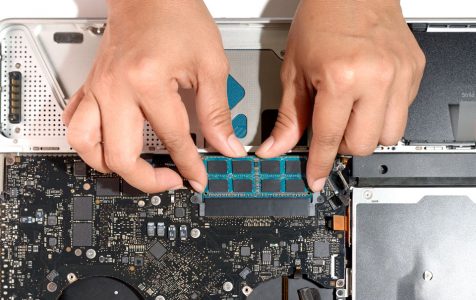Are the applications on your Mac laptop taking longer to open or longer to respond to your commands? Do the applications freeze or quit unexpectedly? Is your Mac slower than its usual speed? These are telltales that tell you one thing, you are running your laptop’s RAM above its optimal capacity and it’s time to optimize it.
What is RAM and Its Importance
Random Access Memory or RAM is an important hardware in your laptop that temporarily holds data and information. The more applications are running, the higher the consumption of memory space on your RAM and applications are known to use and compete for RAM’s limited space. So, when there is a high demand for RAM use, your laptop slows down resulting in longer response time or freezing of an application.
The bigger RAM you have, the easier it will be for your computer to execute tasks and run programs but before you start thinking of adding RAM space on your computer, the first step should and always be to optimize the hardware.
How to Optimize Your Mac’s RAM
First, check the status of your RAM while you are in the middle of doing your daily tasks. Here’s how to check your RAM:
Pro Tip: Scan your Mac for performance issues, junk files, harmful apps, and security threats
that can cause system issues or slow performance.
Special offer. About Outbyte, uninstall instructions, EULA, Privacy Policy.
- Go to Spotlight Search and type in Activity Monitor.
- Select Memory at the top of the window.
- Check out the status of Memory Pressure at the bottom left.
If the Memory Pressure is mostly green, then that means your RAM is doing fine. If it’s yellow, that means your RAM is still good but you need to be cautious when installing more programs that will result in eating up more of your memory space. If it’s red, it means the RAM is under strain because of high usage and you might be in trouble.
For older versions of Mac, the process is the same but the System Memory tab looks different. Instead of Memory Pressure, you have to look at Free and Page Outs. Free tells you how much free space your RAM has, while Page Outs tells you how often your computer runs out of RAM. Higher Page Outs value means that your Mac doesn’t have enough RAM space.
What are the Ways of Optimizing RAM?
One way to optimize RAM on your computer is by using third-party applications. Outbyte macAries is an option that claims to clean memory and improve performance. It’s important to ensure that this software suits your requirements.
To optimize the dock, follow these steps:
- Go to System Preferences.
- Select Dock.
- Choose Scale Effect in the Minimize Using field.
- Uncheck the Animate Opening Applications option.
To clean your dashboard widgets, follow these steps:
- Go to Dashboard.
- Press and hold the Option button.
- Move your cursor over a widget you want to close. You’ll see the Close button (X) appear in the upper-left part of the widget.
- Click the Close button.
- Repeat the same steps for the other widgets you want to close.
To adjust the visual settings. Follow these steps:
- Go to Apple Menu and open System Preferences.
- Choose Accessibility.
- Open the Display tab.
- Tick off the Reduce Motion and Reduce Transparency boxes.
Additional Options
If these steps don’t work and your computer is still slow, the only option left is a system upgrade. MacBook Air and the 2014 MacMini don’t support RAM upgrade. You can view your system’s information by choosing About This Mac from the Apple logo found on the top left part of the screen. The next step is to find out if you have enough space for another RAM. To do this:
- Click on More Info on the About This Mac dialogue box.
- This will launch the System Profiler. Click on Memory on the left.
- Check the Banks or the slots where your RAM is inserted into. If you have an empty bank or two, that means you can upgrade your RAM.
Once you have this information, all you have to do is buy your additional RAM and have it installed by an Apple Support Specialist.
